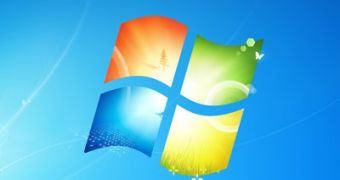Microsoft is making use of the time it still has ahead of the October 22nd general availability deadline of Windows 7 to deliver some last-minute finishing touches to the operating system. The latest iterations of the Windows client and server platforms were released to manufacturing on July 22nd, 2009, and, since August, have been available to specific customer segments including MSDN and TechNet subscribers. On October 13th, the Redmond company made available for download updates for both Windows 7 RTM and Windows Server 2008 R2 RTM designed to boost the stability and reliability of the two platforms.
“An update is available to resolve issues that affect some computers that are running Windows 7 or Windows Server 2008 R2. These issues are reported by customers who use the Error Reporting service or Microsoft Customer Support Services,” Microsoft revealed. “This update improves the stability and reliability of Windows 7 and of Windows Server 2008 R2 in various scenarios.”
This is not an uncommon practice with Microsoft. In fact, ahead of Windows Vista’s GA in January 2007, Jim Allchin, the then Windows boss, told customers that the first thing they would have to do after installing Vista and running the operating system for the first time was to update the brand-new platform. Starting with Vista, the software giant revealed that it would rely increasingly more on Windows Update for the evolution of Windows, as opposed to major upgrade releases – service packs.
There are no less than three versions of the stability and reliability update for Windows 7 available for download. Microsoft is offering the refresh for 32-bit (x86) Windows 7 RTM, for 64-bit (x64) Windows 7 RTM and for 64-bit (x64) Windows Server 2008 R2 RTM.
According to Microsoft, “This update resolves the following issues:
- When you view a PDF file that was created by using a 2007 Microsoft Office system document, the PDF file is displayed on the screen correctly. However, when the document is printed, some characters are missing. This problem occurs in fonts such as Calibri, Cambria, Courier New or Gabriola, in which characters such as ‘fi,’ ‘ti,’ ‘fl’ and other combinations are frequently presented as ligatures. In certain scenarios, an Emergency Alert System (EAS) message does not automatically tune to the appropriate channel in Windows Media Center. - You connect a secondary monitor to a computer that is running Windows 7. When the computer resumes from hibernation, a black screen is displayed. - In certain scenarios, the Windows 7 Customer Experience Improvement Program (CEIP) diagnostic information settings are configured incorrectly for Windows Explorer. Only those users who are enrolled in the Windows 7 CEIP will be affected by this part of the update. This update limits the diagnostic information that can be collected by the CEIP. - You put an x86-based computer that does not have Physical Address Extension (PAE) enabled into hibernation. However, it does not enter hibernation correctly. When you try to resume the computer from hibernation, a black screen is displayed. This issue does not affect x64-based or Itanium-based computers, or computers that have the Data Execution Prevention (DEP) feature enabled. - A problem in Windows 7 affects the playback of certain media files in Windows Media Player, when Windows Media Player is started from Internet Explorer. Only those users whose media associations were changed incorrectly will be affected by this part of the update. - On a computer that is running Windows 7, you use Windows Internet Explorer to open the certificate enrollment Web page and to install an end entity certificate. However, the installation fails. This issue occurs if the certificate chain for the new certificate cannot be built, or if the root certification authority (CA) has not first been installed in the Trusted Roots on the computer.”

 14 DAY TRIAL //
14 DAY TRIAL //